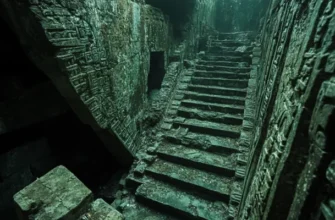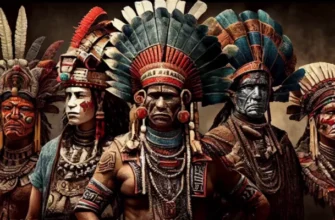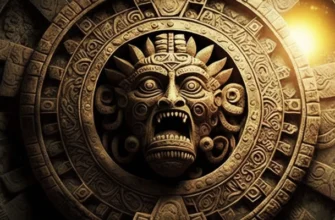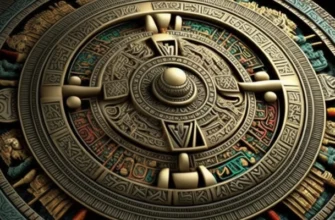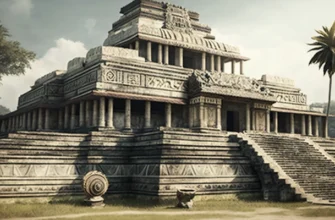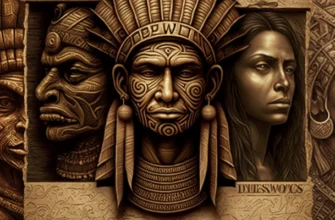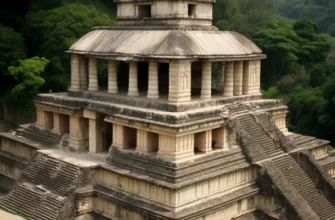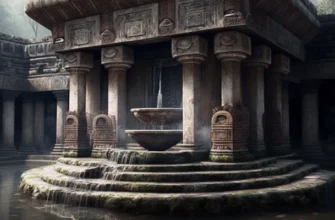The ancient Mayan civilization was one of the most prominent civilizations of antiquity that developed in South America. This civilization existed from approximately 2000 BC to 1500 AD. Mayan history is complex and rich in events that shaped their culture and traditions. This article discusses the origin and development of this civilization, as well as their culture, including religion, art, and architecture. It also explores the Mayan achievements and contributions to science and mathematics.
- Mayan history: origin and development
- The beginning of Mayan history: archaeological findings and applied research
- The formation of Maya culture: the Long Count and Classic periods
- Reasons for the decline and fall of the Mayan civilization
- Mayan culture: religion, art, and architecture
- Mayan religious beliefs and cosmology: gods, rituals, and sacrifices
- Mayan art: architecture, sculpture, painting, murals, and hieroglyphics
- Mayan architecture: pyramids, palaces, cities, and other architectural structures
- Mayan calendar: Long Count, Solar Calendar and Tzolkin Calendar
- Modern research and Mayan heritage
Mayan history: origin and development
Mayan history is an ancient history of civilization that began around 2000 BC in what is now Mexico and Central America. The Maya were founded in southwestern Mexico and eastern Guatemala.
The first Mayan settlements began to develop in the Middle Period (approximately 1000 BC). During this period, the Maya began to develop their culture and technology. They built large cities with pyramids and palaces, used a complex calendar system, and studied astronomy. They also developed writing and mathematics.
In the Classic period (around 250-900 AD), the Maya reached their heyday. They built huge cities with pyramid complexes and rich palaces that became centers of culture and religion. During this period, the Maya also studied science, including mathematics and astronomy, and created a complex writing system.
However, at the end of the Classic period, the Maya began to experience problems that eventually led to the decline of the civilization. Possible reasons for the Mayan decline include climate change, environmental devastation, conflicts between different cities, and other factors.
After the Mayan decline, many of their cultural and scientific achievements were preserved through the copying and preservation of manuscripts by Indians living in Mexico and Central America. Today, the Maya are one of the most famous examples of ancient civilizations that have had a significant impact on the culture and history of the world.
Significant interest in Mayan history began to manifest itself in the XVIII-XIX centuries, when numerous ruins of cities and pyramids were found in Mexico and Central America. In 1839, the first Mayan written text was found, which opened up the possibility of studying Mayan writing and culture.
Modern research indicates that the Maya were a very advanced civilization that had a complex social structure, a high level of craft and technology, and a developed culture and religion.
Despite the decline of the civilization, the Mayan culture influenced the development of the cultures of modern Indian peoples of Mexico and Central America. In addition, much of the Mayan knowledge, such as mathematics and astronomy, was passed on to subsequent civilizations and had a significant impact on the world’s science and technology.
In modern-day Mexico and Central America, the Maya continue to exist as an ethnic group, preserving their unique culture and traditions. Many of the ruins of Mayan cities have also become popular tourist destinations, attracting thousands of visitors from all over the world who want to see these impressive monuments of an ancient civilization.
The beginning of Mayan history: archaeological findings and applied research
The beginning of Mayan history dates back to approximately 2000 BC, when the first settlements appeared in modern Mexico and Central America, which became the basis for the formation of the Mayan civilization. The greatest achievements of the Mayan civilization are architecture, mathematics, astronomy, art, and writing.
Archaeological findings, such as ruins of cities and pyramids, give us an idea of how the Maya lived. Among the most famous archaeological sites are the cities of Palenque,
Chichen Itza, and Uxmal. These cities have complex architecture that includes pyramids, palaces, and theaters.
Applied research also provides an opportunity to better understand Mayan culture. For example, the study of Mayan astronomy has revealed that they had fairly accurate calendars based on the movements of the Sun and Moon. In addition, the study of Mayan writing has allowed us to decipher their language and learn more about their history and culture.
One of the most important applied research is also archaeological findings, which make it possible to study Mayan technology and crafts. In particular, the study of ceramics, glass, and other materials allows us to better understand the processes of manufacturing and use of objects in everyday life of the Maya.
All of these archaeological finds and applied research give us a better understanding of Mayan history and culture. In particular, the study of Maya writing makes it possible to decipher textual sources that contain information about their religious, political, and cultural traditions. This gives us a more complete picture of how the Maya civilization functioned.
Applied research also allows us to understand how the Maya used the natural resources that were available in their territory. Studies of agriculture allow us to understand how the Maya provided themselves with food and water. Studies of trade and exchange of goods allow us to understand how the Maya cooperated with other peoples.
Finally, applied research allows us to understand what the Maya social and economic structures were like. Studies of architecture and urban planning allow us to understand how the Maya organized their cities and populations. Studies of art and religion allow us to understand what the significant cultural practices were and how they influenced Maya life.
All of these applied studies and archaeological findings help us to better understand Maya history and culture. They enable us to see how the Maya lived, how they functioned, and how they influenced the modern world.
The formation of Maya culture: the Long Count and Classic periods
Mayan culture was shaped by a long historical process that spanned several eras.
The Long Count period (2600 BC – 250 AD) is the initial period of Mayan culture development. At this stage, they became farmers, learned to grow corn, beans, pumpkins, cotton, and other crops. It was also at this stage that the calendar was created, consisting of three different cycles: the Sun cycle (365 days), the Venus cycle (584 days), and the Long Count cycle (260 days). This period also saw the creation of a writing system consisting of hieroglyphs and symbols.
The Classic period (250-900 AD) is the period of the greatest flowering of Mayan culture. At this stage, huge cities such as Palenque, Copan, and Chichen Itza were built, as well as many temples, palaces, and other architectural structures. During this period, significant progress was made in mathematics, astronomy, medicine, and other sciences. The Maya believed in many gods and performed religious rites, often involving sacrifices.
The Mayan culture went through a number of changes and crises, but has been preserved to this day in the form of architecture, art, manuscripts, and other material monuments.
Reasons for the decline and fall of the Mayan civilization
There are many theories about the reasons for the decline and fall of the Mayan civilization, and there is still no definitive answer to this question. Here are some of the main theories:
Environmental problems: Some researchers believe that the Mayan decline was due to environmental problems such as soil depletion, water pollution, and wildlife degradation as a result of overexploitation of natural resources. This could have led to shortages of food and other material resources, forcing the Maya to change their way of life and leading to wars between different groups.
Wars: Another theory attributes the Mayan decline to wars between different cities and states. These conflicts may have led to a decline in population and depletion of resources.
Social conflicts: Some researchers believe that the Mayan decline was due to growing social conflicts and inequality in society. This may have led to internal conflicts, revolutions, and other forms of social unrest.
Epidemics: Another theory attributes the Mayan decline to disease epidemics, which may have been caused by diseases and other factors.
Climate change: Recent research has shown that the Maya decline may be linked to climate change, particularly periods of drought and other natural disasters.
Political instability: Another theory attributes the Mayan decline to political instability and corruption in the government. This could have led to a decline in trust in the government and low efficiency of state institutions.
Religious changes: Some researchers believe that the Maya’s decline was due to changes in religious practices and beliefs, which may reflect changes in social and cultural values.
Historians and archaeologists continue to investigate the causes of the Mayan decline and conduct new research to better understand this mystery of history.
Mayan culture: religion, art, and architecture
The Mayan culture was highly developed and had a huge impact on religion, art, and architecture. The basic Mayan religious belief was based on the cult of gods that reflected various aspects of life, including natural phenomena, death, and rebirth. Religious rituals and sacrifices played an important role in Mayan daily life.
Mayan art was diverse and included painting, sculpture, ceramics, fabrics, and other art forms. Mayan art often reflected religious themes and symbolism, such as depictions of gods and ritualistic ceremonies. An interesting element of Mayan art is the so-called “written glyphs” – complex symbols that were used to record history and religious texts.
Mayan architecture was very complex and innovative. Mayan buildings, such as pyramids and palaces, were able to withstand even strong earthquakes. They were decorated with intricate reliefs and symbols that reflected Mayan religious beliefs. These buildings also had a practical significance, as they were used as places of religious ceremonies, political gatherings, and living quarters.
In general, Mayan culture was very developed and innovative, and had a great influence on other peoples of Central America and Mexico.
Mayan religious beliefs and cosmology: gods, rituals, and sacrifices
The Mayan religious system was very complex and contained a large number of gods and heroes who reflected various aspects of life and natural phenomena. The main Mayan deities were associated with the sun, moon, and stars, as well as with natural phenomena such as rain and wind. Each god had his own followers and rituals that were dedicated to honoring him.
Rites and sacrifices were an important part of the Mayan religion. The Maya believed that sacrifices helped them secure the benefits provided by the gods. Sacrifices could range from gifts of food and drink to human sacrifice. Human sacrifices were rare, but sometimes they were performed during important religious events.
The Maya cosmology was very complex and reflected their view of the universe. The Maya believed that the world consisted of three levels – the underworld, the world of the living, and the celestial world. Each level was associated with its own deities and beliefs. In addition, the Maya believed that time consisted of cycles, each of which lasted 52 years. Each cycle ended with a major religious ceremony, after which a new cycle began.
In general, Mayan religious beliefs and cosmology were very complex and contained a large number of symbols and rituals that were important to the Maya. These beliefs also influenced Mayan culture and art, which was reflected in religious buildings and murals.
Mayan art was highly developed and contained a large number of symbols and images of gods and heroes. Mayan architecture included huge pyramids, temples and palaces that were built of stone and decorated with colored paintings and stone reliefs. Many structures were specially designed for religious ceremonies and sacrifices.
In addition to architecture, Mayan art included various types of painting. Particularly famous are the paintings on ceramics that depicted gods and heroes, as well as various scenes from Mayan daily life. Also known were the paintings on the walls and ceilings of religious buildings, which contained complex symbolism and reflected various religious events and rituals.
In general, the Maya religion influenced all aspects of their culture, from art and architecture to daily life and social relations. The Maya religious beliefs were very complex and rich in symbolism, and they continue to be an interesting object of research and discussion to this day.
Mayan art: architecture, sculpture, painting, murals, and hieroglyphics
Mayan art is an amazing and impressive art that developed in Mesoamerica for more than a thousand years. The Mayans were known for their magnificent architecture, exquisite sculpture, painting, and hieroglyphic writing.
Mayan architecture was very advanced and impressive. They built large complexes of buildings that had religious, ceremonial, and astronomical significance. The most famous structures are the pyramids, palaces and balls, as well as many other buildings that had a variety of functions.
Mayan sculpture has been highly praised for its elegance and craftsmanship. Mayan sculptures were made of various materials such as stone, wood, and clay. They depicted gods, heroes, animals, and other characters that had religious and mythological significance.
Mayan painting was known for its color saturation and realism. They created animal masterpieces on the walls of their buildings, depicting scenes from their daily lives, religious and mythological events.
Mayan hieroglyphic writing was one of the most complex and developed writing systems in the world. It was a system of more than 800 hieroglyphs that were used to record various events, from daily life to religious rituals.
In general, Mayan art was very developed and diverse. It reflected the great cultural and religious heritage of this people, which has survived to this day in the form of ruins, sculptures, paintings and other works of art. The Maya created a large number of masterpieces that are not only the cultural heritage of the world, but also help us to better understand this ancient civilization.
Mayan architecture: pyramids, palaces, cities, and other architectural structures
Mayan architecture is known for its impressive pyramids, palaces, cities, and other architectural structures built by these ancient Mayans. The peculiarity of Mayan architecture is its high level of development and complexity.
The Mayan pyramids are the most famous structures and act as a symbol of the Mayan civilization. They were used for religious ceremonies and other important events. The pyramids consisted of stone blocks that were installed without the use of cement or glue. Each pyramid had its own special purpose, from storing the dead to holding religious ceremonies.
Mayan palaces were buildings for the nobility and rulers. They were often decorated with details of high artistic quality, such as reliefs and statues. The palaces included living quarters, iron doors, tiled floors, and walls decorated with murals and mosaics.
Mayan cities were located in dense forests and often had engineering systems to provide water and other important communications. The Maya created huge cities with urban centers that were located around a plaza. These cities had structures such as palaces, pyramids, sports fields, and markets.
Other Mayan architectural structures include fortresses, astronomical observatories, water systems, and other buildings that demonstrate a tremendous level of
of engineering and technology development in the Mayan civilization. For example, Mayan water systems were very advanced and consisted of canals, aqueducts, and reservoirs that provided water to cities and farmlands in mountainous areas.
Astronomical observatories were also very important to the Maya, who used them to observe the movements of the sun, moon, and planets, to create a calendar, and to conduct religious rites.
One of the most impressive examples of Mayan architecture is Chichen Itza, a city in Mexico that was founded in the VII century. It consisted of large squares and theater venues where religious ceremonies and games were held. The city also had huge pyramids that were important religious centers.
In general, Mayan architecture is a testament to the great cultural and technological heritage left by these ancient people. They were known for their ability to make mathematical and astronomical calculations, which allowed them to create such impressive and complex architectural structures.
Mayan calendar: Long Count, Solar Calendar and Tzolkin Calendar
The Mayan calendar consists of two main calendars: the Long Count and the Tzolkin calendar.
The Long Count, also known as Likun Kaan or Haab, was a solar calendar consisting of 365 days. This calendar was based on observations of the sun’s movement and was used for agriculture and trade. Each year in the long count consisted of 18 months of 20 days each, plus five more days that were considered unlucky and called “no-nothing”.
The Tzolkin calendar consisted of 260 days and was used for religious and spiritual purposes. This calendar contained 20 months of 13 days each, and each day had its own name and symbolism. The Tzolkin calendar was used to predict the future and decide various issues such as marriage, wars, and politics.
Both calendars were important to the Maya, who used them to determine time on earth and in space, to perform religious rites, and to predict the future. These calendars helped the Maya to develop their culture and science, and their knowledge of astronomy and mathematics has left a mark on the modern world.
In general, the Maya were very skilled and creative in many areas of science and technology. For example, the Maya used information about astronomy to create accurate calendars and predict astronomical events such as eclipses and planetary positions. They also had a sophisticated writing system that allowed them to record their knowledge and information.
The Maya also understood how to work with metals and stone, which allowed them to create a variety of devices and tools, including weapons, shields, and other objects. They also made sophisticated instruments such as clocks and pyramidal instruments to measure time and astronomical events.
The Maya also used their knowledge and technology to create artwork and a variety of everyday objects such as ceramics, textiles, and jewelry. They made impressive sculptures, figurines, and reliefs that often reflected their religious and cultural beliefs.
In general, the Maya had a very developed culture and spiritual life, which was reflected in all areas of their lives. They believed in many deities and spirits of nature, and used their knowledge of nature and astronomy to worship these forces. They also had a very strong connection to nature and the environment where they lived, and understood how to act to preserve it for future generations.Mayan insights into science: medicine, hydraulics, agriculture, and engineering.
Modern research and Mayan heritage
Today, researchers continue to study Mayan culture and science, and uncover new information about this civilization. Archaeological excavations, studies of Mayan texts and artifacts allow us to better understand their knowledge and achievements.
For example, the study of Mayan mathematical and astronomical knowledge has allowed modern scientists to discover the complex mechanisms used by the Maya to measure time and predict astronomical events. Researchers are also investigating Mayan medical knowledge and healing methods to understand how they used natural resources to treat disease and injury.
The Mayan heritage also leaves a mark on the modern world, including language, culture, and technology. For example, the Quechua language used by the Maya is still a language spoken by millions of people in Mexico and Central America. Mayan cultural practices and traditions also influence the lives of modern people, and the crafts and technologies they used are still being preserved and applied in the modern world.
In general, the Maya have left a huge impact on modern culture and science, and continue to be a source of study and inspiration for many researchers and cultural studies scholars.
Modern archaeological research in the territory of the former Mayan civilization, which covers parts of Mexico, Guatemala, Belize, El Salvador, and Honduras, continues to yield new discoveries about the life and culture of this great civilization.
One of the most remarkable studies is the discovery of the lighthouse city-state located on the territory of Guatemala. The lighthouse is considered one of the earliest Mayan states and has the largest area of any Mayan state. The discovery of the lighthouse allowed archaeologists to learn more about the political and social organization of the Mayan civilization.
Other important discoveries are the findings of new cities and social structures, such as merchants and artisans, indicating a more complex and extensive social structure of the Mayan civilization than previously thought.
The preservation and protection of Mayan cultural heritage is of increasing interest today. The governments of countries where Mayan sites are located are working to create national parks and other projects to preserve and protect these sites for future generations.

